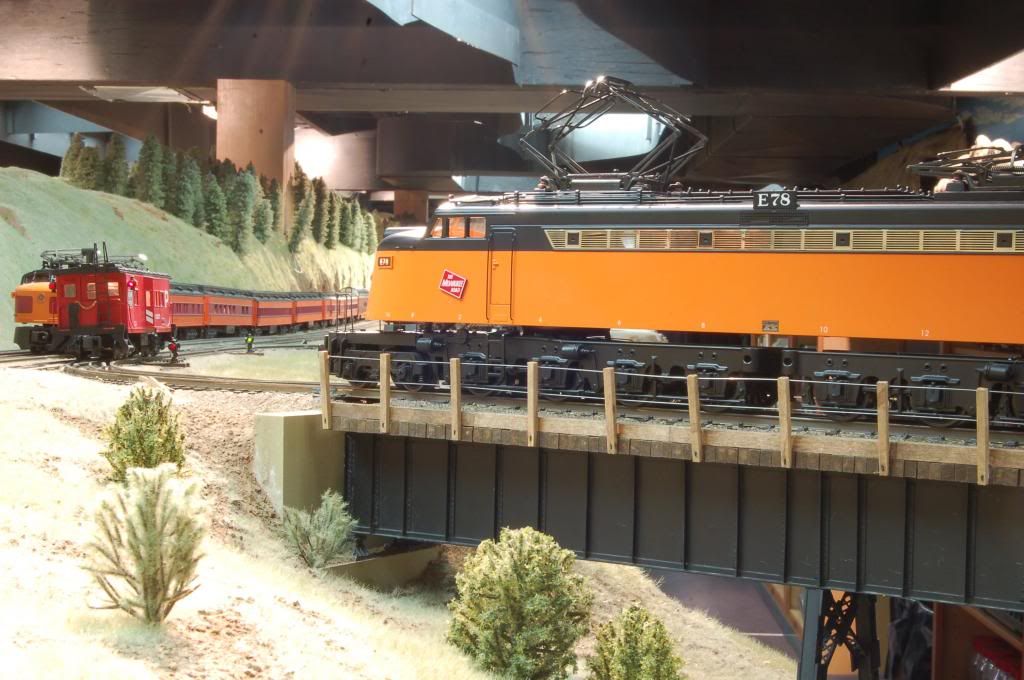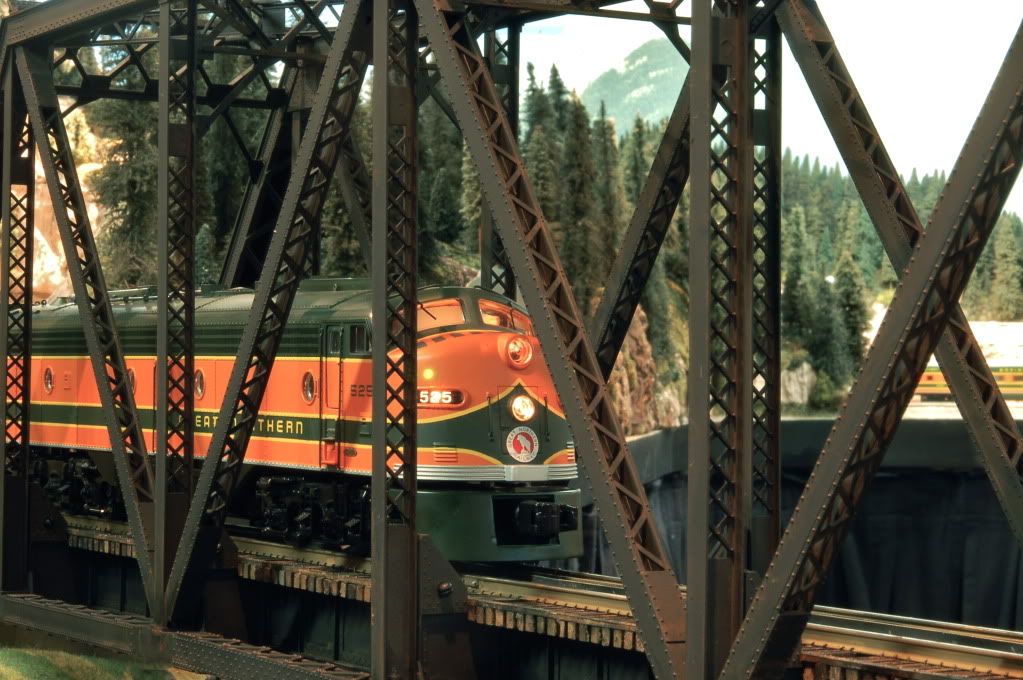I must have been a Troll in a past life as I have a weird curiosity about bridges. This one has me puzzled. I've seen several bridges with ballasted decks in both wood and steel. A wooden one that comes to mind is a trestle on the remnants of the ATSF Elsinore Branch off Temescal Canyon Road. I saw a pair of steel ones up near Vancouver, Washington.
The question is what was the advantage of doing this vs. open structure? On a concrete bridge, it makes sense as the ballast better supports the track laterally and still allows for drainage.
Thanks.






